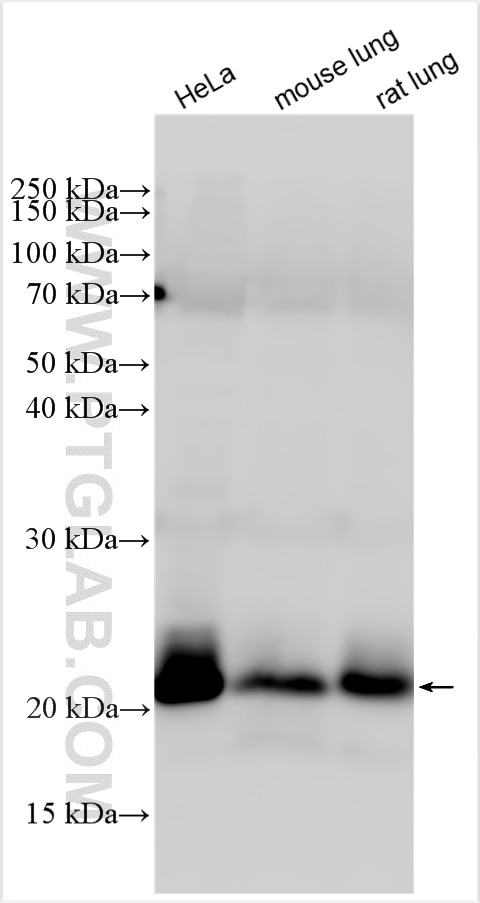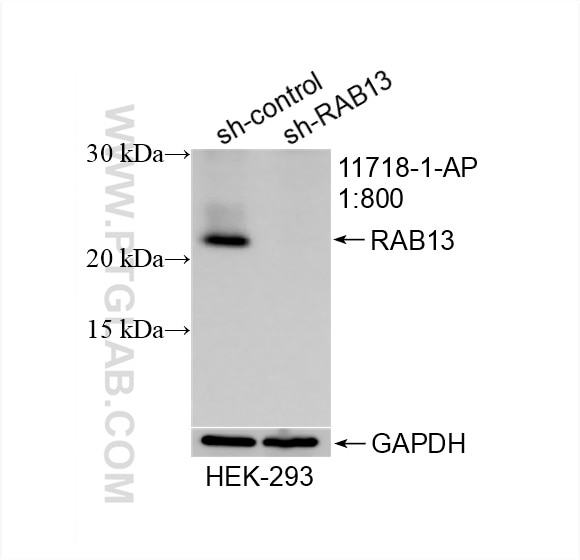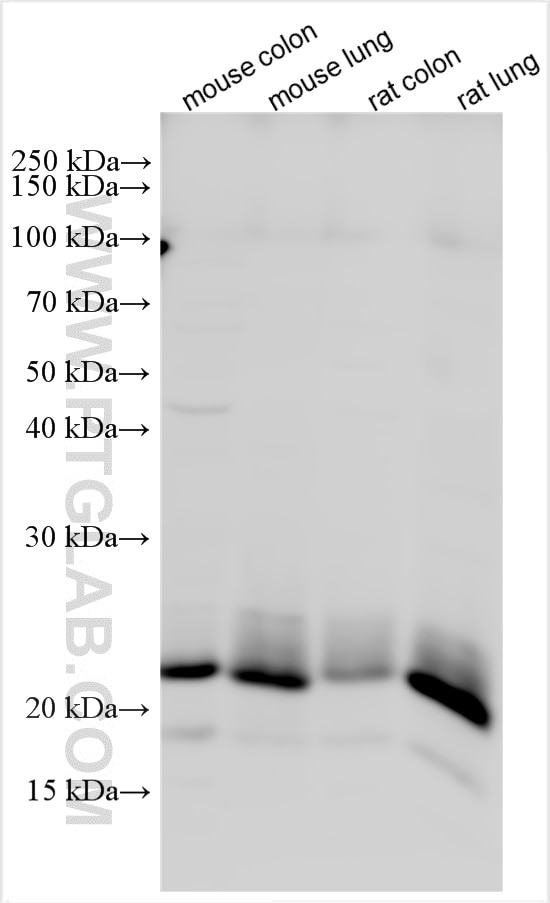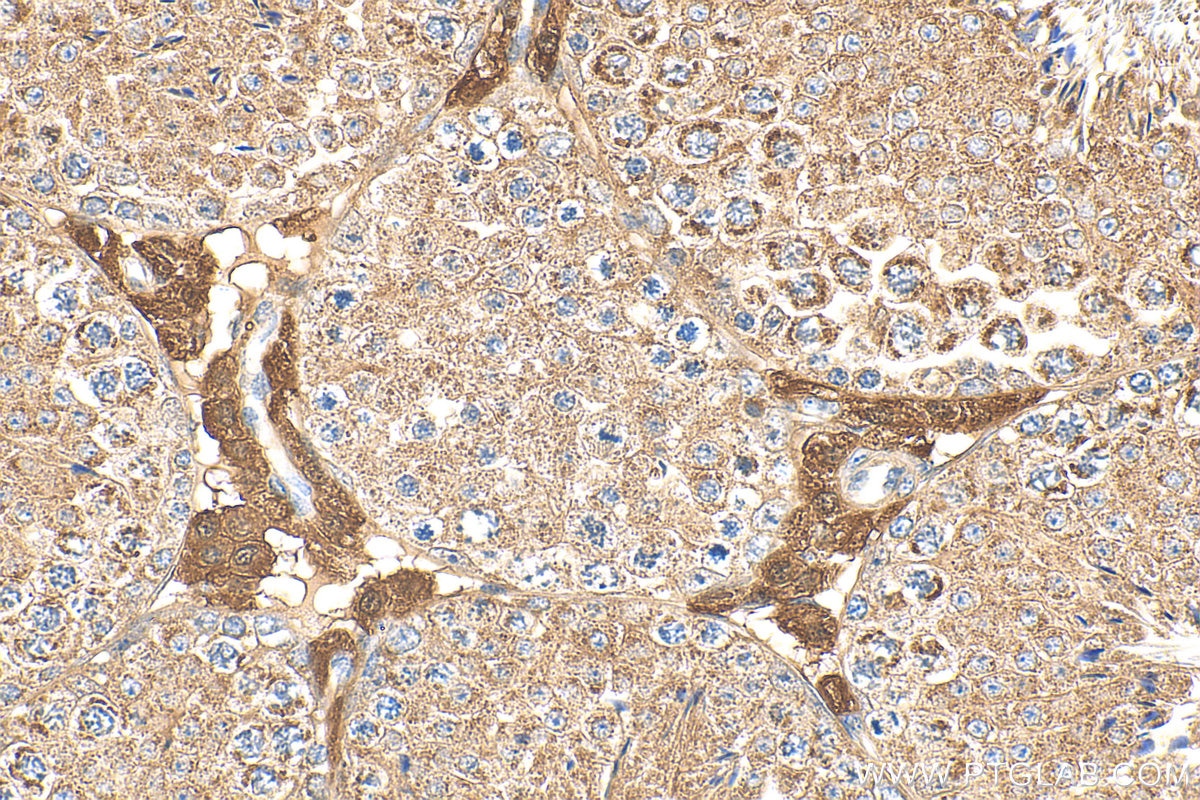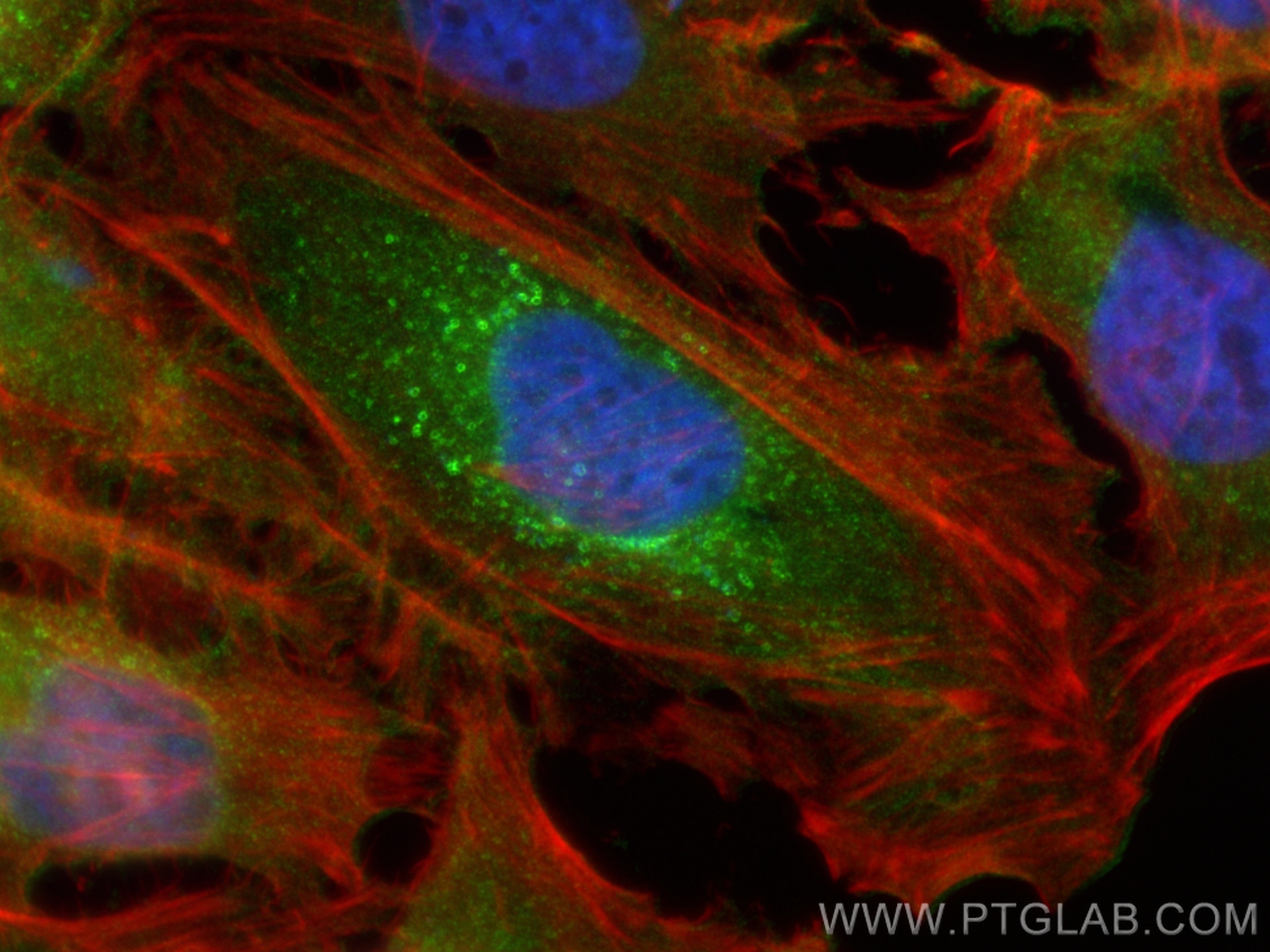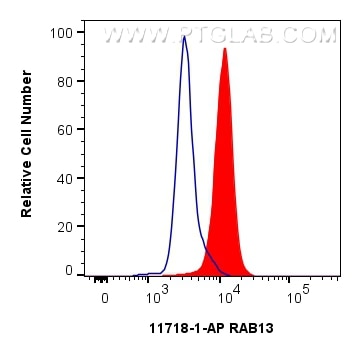Validation Data Gallery
Tested Applications
| Positive WB detected in | HeLa cells, HEK-293 cells, mouse colon tissue, mouse lung tissue, rat lung tissue, rat colon tissue |
| Positive IHC detected in | mouse testis tissue Note: suggested antigen retrieval with TE buffer pH 9.0; (*) Alternatively, antigen retrieval may be performed with citrate buffer pH 6.0 |
| Positive IF/ICC detected in | HeLa cells |
| Positive FC (Intra) detected in | K-562 cells |
Recommended dilution
| Application | Dilution |
|---|---|
| Western Blot (WB) | WB : 1:500-1:3000 |
| Immunohistochemistry (IHC) | IHC : 1:50-1:500 |
| Immunofluorescence (IF)/ICC | IF/ICC : 1:200-1:800 |
| Flow Cytometry (FC) (INTRA) | FC (INTRA) : 0.40 ug per 10^6 cells in a 100 µl suspension |
| It is recommended that this reagent should be titrated in each testing system to obtain optimal results. | |
| Sample-dependent, Check data in validation data gallery. | |
Product Information
11718-1-AP targets RAB13 in WB, IHC, IF/ICC, ELISA applications and shows reactivity with human, mouse, rat samples.
| Tested Reactivity | human, mouse, rat |
| Host / Isotype | Rabbit / IgG |
| Class | Polyclonal |
| Type | Antibody |
| Immunogen |
CatNo: Ag2292 Product name: Recombinant human RAB13 protein Source: e coli.-derived, PGEX-4T Tag: GST Domain: 1-203 aa of BC000799 Sequence: MAKAYDHLFKLLLIGDSGVGKTCLIIRFAEDNFNNTYISTIGIDFKIRTVDIEGKKIKLQVWDTAGQERFKTITTAYYRGAMGIILVYDITDEKSFENIQNWMKSIKENASAGVERLLLGNKCDMEAKRKVQKEQADKLAREHGIRFFETSAKSSMNVDEAFSSLARDILLKSGGRRSGNGNKPPSTDLKTCDKKNTNKCSLG 相同性解析による交差性が予測される生物種 |
| Full Name | RAB13, member RAS oncogene family |
| Calculated molecular weight | 203 aa, 23 kDa |
| Observed molecular weight | 23 kDa |
| GenBank accession number | BC000799 |
| Gene Symbol | RAB13 |
| Gene ID (NCBI) | 5872 |
| RRID | AB_3669132 |
| Conjugate | Unconjugated |
| Form | |
| Form | Liquid |
| Purification Method | Antigen affinity purification |
| UNIPROT ID | P51153 |
| Storage Buffer | PBS with 0.02% sodium azide and 50% glycerol{{ptg:BufferTemp}}7.3 |
| Storage Conditions | Store at -20°C. Stable for one year after shipment. Aliquoting is unnecessary for -20oC storage. |
Background Information
RAB13 (Ras-related protein Rab-13) is also named as GIG4. Rab13 is a member of the Rab GTPase family. RAB13 is highly expressed in malignant cells. Rab13 was highly expressed in BCSC of triple-negative breast cancer (TNBC) (PMID: 35395074). RAB13 is involved in a number of processes in LIHC, including MTORC1 signaling, MYC targets v1, G2M checkpoint, MITOTIC spindle, DNA repair, P53 pathway, glycolysis, PI3K-AKT-MTOR signaling, etc (PMID: 37803063). RAB13 enhances its circulation to the plasma membrane to promote breast cancer invasion. By influencing the tumor microenvironment, RAB13 maintains breast cancer stem cells (PMID: 37803063).
Protocols
| Product Specific Protocols | |
|---|---|
| IF protocol for RAB13 antibody 11718-1-AP | Download protocol |
| IHC protocol for RAB13 antibody 11718-1-AP | Download protocol |
| WB protocol for RAB13 antibody 11718-1-AP | Download protocol |
| Standard Protocols | |
|---|---|
| Click here to view our Standard Protocols |

